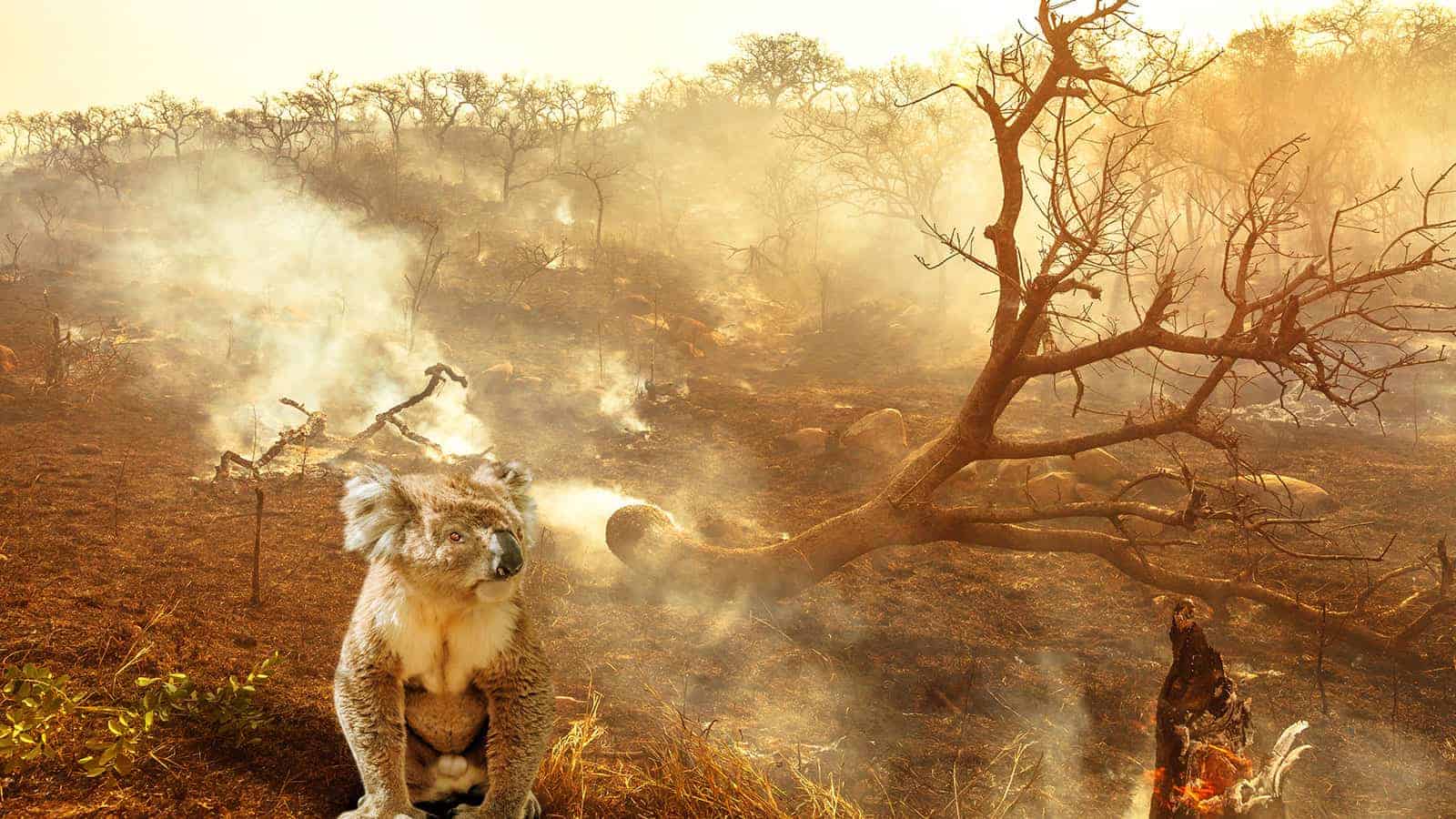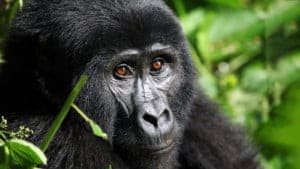With the recent outbreak of devastating fires throughout much of Eastern Australia, the koala continues to appear in headlines. As these fires are significantly impacting already declining populations, the threat of extinction is becoming very real.
Since 2000, the koala remained marked as “vulnerable” on the endangered species list. Furthermore, recent years brought a rapid decline in their populations. Many environmental groups even proclaim them to be “functionally extinct.”
That term means there are not enough living to produce future generations. Yet, this is debatable as it is difficult to predict the exact numbers of their populations.
They are one of the most iconic Australian animals. We recognize them for their round faces and large fluffy ears. Currently the last existing marsupial in the Phascolarctidae family, these plant-eating marsupials live only in the Eastern regions of Australia. They live with tall eucalyptus forests and woodlands and thrive in the tropical semi-humid areas of Queensland.
Reasons for the Declining Koala Populations
1 – Habitat Destruction and Cleared Lands
In recent years, we have seen major declines in marsupial populations due to changes in the environment, including droughts, fires, and forest clearing. In fact, 24 marsupials have been named extinct and 25% of their land is now cleared. Koalas, in particular, are struggling to survive amidst their changing landscape. Dating back to the 1990’s those living in Southeast Queensland have suffered major population decreases. Recent estimates call for a population decline of about 80%.
There are numerous factors which are contributing to their overall decline. In addition to habitat loss due to climate change and natural disasters, they also suffer due to tree-clearing for urban, agricultural and industrial development. Because their homes are being destroyed, many also are involved in car accidents as they move in search of new homes. They are also threatened by dog attacks and diseases such as chlamydia.
The populations are declining in the northern regions mainly due to habitat destruction, urban development, and disease. On the other hand, southern populations are decreasing due to widespread genetic defects caused by reproduction amongst genetically-related members.
2 – Environmental and Climate Changes
The most significant impact on their overall survival as a species is the continuous destruction of their environment. By both natural and human-influenced factors, they are increasingly seeing large proportions of their habitats being destroyed.
These creatures typically spend most of their time in Eucalyptus trees. As herbivores with a unique and specific diet, their primary food source is Eucalyptus leaves. Eucalyptus leaves would be toxic to most other animals, meaning they have little competition for food resources. Because of their nutrient-poor diet, they spend up to 22 hours a day sleeping.
Due to their specific dietary needs, they also require a very limited habitat. For this reason, they tend to live in isolated populations where they can find food resources. These populations have been becoming more and more isolated in recent years due to tree-clearing and other environmental changes. This means higher-density populations struggle to find resources in their areas due to competition. This also makes it difficult for them to find the right mates.
Despite changes in their environment, studies find that many fail to respond to changes in their habitat. This is likely because they correlate their specific area with previous reproductive and survival success. Ultimately, they suffer negative consequences due to their lack of acknowledgment of environmental changes.
Forced to move out of their homes and find new habitats, they end up spending more time on the ground to find new trees. This significantly compromises their safety and exposing them to threats such as vehicle accidents and attacks by dogs.
These changes heighten stress levels in these animals, making them increasingly vulnerable to disease and illness. Particularly for those already struggling with diseases, it becomes increasingly challenging for them to survive.
3 – The Spread of Chlamydia
In addition to the major impacts to their environments, many koala populations also struggle with the spread of chlamydia. The infectious bacteria in chlamydia can severely impact their overall health. It is also easily spread to young from the mother’s pap. The pap is a nutrient-dense fecal matter which young typically eat after breastfeeding but before starting on eucalyptus leaves. Some populations are now seeing up to 100% rates of infection.
Veterinarians treated koalas with antibiotics for chlamydia for the past twenty years.. Yet, recent studies have found that these are interfering with the gut bacteria that enable them to eat eucalyptus leaves. For this reason, doctors are exploring alternative means of treating them – such as the use of probiotics, fecal transplants, and a possible vaccine that has succeeded in trials.
Chlamydia can produce severe symptoms or cause no symptoms, but it entirely depends on the individual. It has been showed to cause numerous other health ailments such as cystitis, conjunctivitis, and pneumonia.
The previously cited report mentions that, between the years of 1997 and 2013, veterinarians diagnosed the koalas they treated as follows:
- 52% of them brought in had chlamydia
- 16% sustained vehicle strikes
- 14% suffered from ailing health.
4 – Damage of Heightened Stress Levels
Continued environmental changes have led to numerous other struggles for koalas including inbreeding, depression, and heightened stress levels. With rising physiological stress levels, they are increasingly vulnerable to other diseases and destructive conditions. This is particularly important to recognize humans dealing with or treating them.
Associate professor of Pathobiology and Diagnostic Investigation at Michigan State University, Dalen Agnew, states the following:
“Any time you handle [a wild] animal, a certain amount of stress will decrease their immune function”.
This is important to note when handling these animals as they are already suffering from poor health conditions.
As of 2016, wildlife experts estimated that 329,000 remained wild. There has been a decline of about 24% over the past three generations. Because they occupy such a wide range throughout Eastern Australia it is difficult to get an exact estimate on their populations. Because they are so spread out, some populations may be locally extinct while others are perfectly fine.
5 – Effect of Brushfires on Overall Koala Population
Because they tend to live and spend their time high in trees, it is more difficult for a koala to escape when the threat of fire emerges. For other animals, they move much more rapidly and have a better chance at escaping by flight or feet. These animals move at a much slower rate and because the adapted to living in trees. This means their best means of escape is to climb higher up the tree. Under normal circumstances, the fires could not reach the tops of these trees. However, these fires are operating at a much higher scale.
The recent brushfires in much of Eastern Australia covered over 10 million hectares of land. Reports estimate 1 billion animals killed or injured. It’s believed that of those, about 8,400 koalas perished, and 50% of the population of Kangaroo Island are gone forever.
With continued destructive environmental conditions and urbanization, there is a real possibility of extinction for koalas in as little as 30 years.
6 – Lack of Protected Areas
Another challenge they face is that despite their vulnerability to extinction. That’s because very little of their habitat falls into federally protected areas. In turn, it is much easier for people to continually destroy and take over their habitats.
Rescue Worker Efforts at Protection and Habitat Preservation
Fortunately, the widespread recognition of the threats these creatures face in an effort to survive has brought many community members together. Community organizations, conservationists, workers, and the government lobby to ensure more areas of their habitat are being protected. Efforts are also underway to restore some of the cleared areas of habitat.
Additionally, rescue volunteers continue to rescue sick and injured animals affected by the brushfires and other challenges. Vets at animal hospitals continue to work hard at treating these beautiful creatures and return them back to their full health.
Despite the numerous challenges that these animals face and will continue to face in terms of environmental destruction, disease, and climate change, there is still hope for them. As scientists, conservationists, and community members continue to work together to understand these creatures and protect their land, we can learn the best ways to protect them.
Final Thoughts on the Plight of the Koala
The more we understand the specific causes of death and their response to changing conditions, the more we can determine how to keep them safe. By taking measures to preserve their habitats and continuing to rehabilitate sick and injured animals, we can make a substantial impact on the overall population. Additionally, we must work with government agencies to enact both local and federal policies aimed at conservation efforts. Through combined efforts and awareness of primary issues affecting koalas and their overall health, we have the potential to change their future.


















